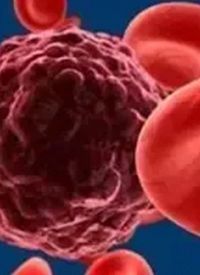Article
NVG-111 Generates Early Efficacy With Manageable Safety in Relapsed/Refractory CLL, MCL
Author(s):
The ROR1-targeting bispecific T-cell engager NVG-111 elicited promising responses with a manageable safety profile in patients with relapsed/refractory chronic lymphocytic leukemia or mantle cell lymphoma.

The ROR1-targeting bispecific T-cell engager (BiTE) NVG-111 elicited promising responses with a manageable safety profile in patients with relapsed/refractory chronic lymphocytic leukemia (CLL) or mantle cell lymphoma (MCL), according to findings from the phase 1 NVG111-101 trial (NCT04763083).
Data presented at the 2022 ASCO Annual Meeting showed that in 5 patients with CLL, NVG-111 generated responses in 4 patients, including a complete response (CR) in 2 patients and a partial response in 2 patients.
In the 2 patients to achieve a CR, both had undetectable minimal residual disease (MRD) at last assessment. In long-term follow-up of 1 complete responder, the patient still had undetectable MRD at 6 months following the completion of NVG-111. The other complete responder will enter long-term follow-up after the completion of a final cycle of NVG-111.
The 2 partial responders are in long-term follow-up. The fifth patient experienced only a cytokine response, and the patient was off study treatment following disease progression.
The 1 patient with MCL treated with NVG-111 achieved a PR, and that patient is currently in long-term follow-up.
NVG-111 is a novel humanized, tandem single-chain variable fragment ROR1 x CD3 BiTE that elicits potent tumor killing by engaging a membrane-proximal epitope in the membrane proximal frizzled domain of ROR1 and redirecting T-cell activity.
The NVG111-101 trial is a first-in-human study evaluating the safety and efficacy of NVG-111 in hematological malignancies before it is investigated in solid tumors.
Phase 1 of the study is enrolling up to 36 patients with relapsed/refractory CLL, small lymphocytic lymphoma, or MCL who received at least 2 prior lines of systemic therapy and had stable disease or a PR following their last line of therapy.
The first 3 cohorts featured 1 patient each, and these patients were subjected to accelerated dose titration, with treatment administered daily for 21 days on, 7 days off, in every 28-day cycle. Patients received treatment for 3 cycles, or up to 6 cycles where applicable for each cohort. The patient in cohort 1 received 0.3 μg of intravenous (IV) NVG-111 per day for each cycle. In cohort 2, the patient received 1 μg of IV NVG-111 per day in cycle 1, 3 μg in cycle 2, and 10 μg in cycle 3. The patient in cohort 3 was given 3 μg of IV NVG-111 per day in cycle 1, 10 μg in cycle 2, and 30 μg in cycle 3.
In cohort 4, 3 patients received 30 μg of IV NVG-111 per day in all 3 cycles. Notably, all patients remained on salvage ibrutinib (Imbruvica) during study treatment.
The primary end point of the trial was safety, including adverse effects (AEs), serious AEs, and dose-limiting toxicities. Secondary end points included anti-tumor activity, pharmacokinetics, and biomarkers.
Regarding safety, all 3 patients in cohort 4 experienced grade 1 cytokine release syndrome (CRS), and it resolved in all patients. No patients in the first 3 cohorts experienced CRS. One patient in cohort 4, who had CLL, experienced grade 3 immune effector cell-associated neurotoxicity syndrome during the first cycle of treatment. As a result, NVG-111 was stopped after 48 hours, and the patient was given dexamethasone and tocilizumab (Actemra).
No grade 3 or higher AEs or serious AEs were reported. No grade 2 AEs were reported in any patients in cohorts 1, 2, and 3. In cohort 4, all patients experienced multiple grade 1/2 AEs.
An analysis of pharmacokinetics showed that circulating NVG-111 levels from patients treated with less than 10 μg per day were below the 250 pg/mL threshold for detection. At 10 μg/day, the average steady state (Avgcss) serum concentration was 168 pg/mL to 228 pg/mL. At 30 μg/day, the Avgcss serum concentration was 425 pg/mL to 610 pg/mL.
The biomarker analysis showed that a transient increase in cytokines detected with varying kinetics at all dose levels.
The phase 1 trial is ongoing, with additional cohort expansion planned for patients with CLL and MCL. The recommended phase 2 dose has yet to be determined. Additionally, step-up dosing and NVG-111 monotherapy are being evaluated in challenging patients who are at the end of line.
Reference
Jasani P, Townsend W, Asher S, et al. First-in-human phase 1 study of a ROR1 targeting bispecific T cell engager (NVG-111) shows evidence of efficacy in patients with relapsed/refractory CLL and MCL. J Clin Oncol. 2022;40(suppl 16):7535. doi:10.1200/JCO.2022.40.16_suppl.7535









